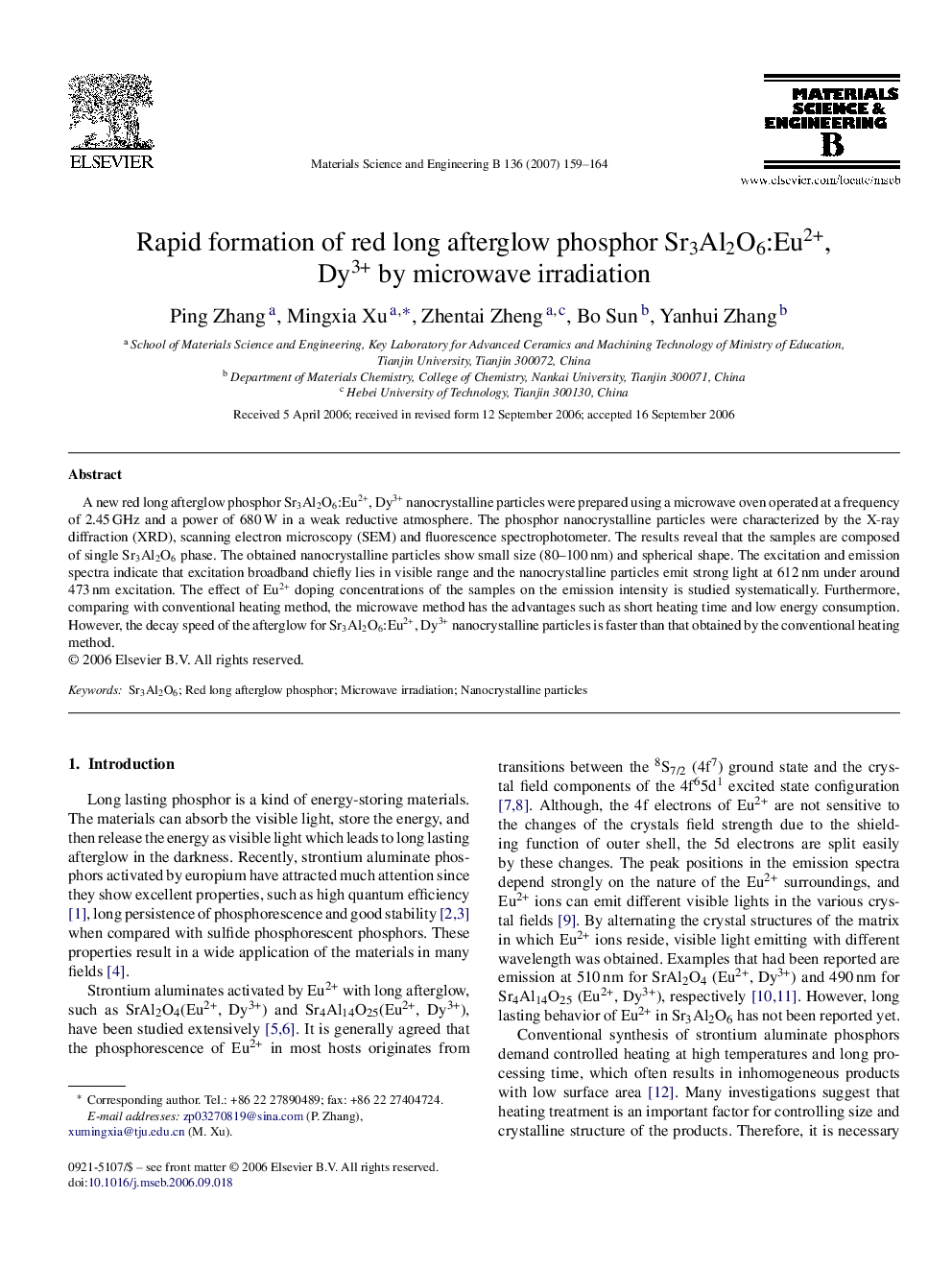| Article ID | Journal | Published Year | Pages | File Type |
|---|---|---|---|---|
| 1531646 | Materials Science and Engineering: B | 2007 | 6 Pages |
A new red long afterglow phosphor Sr3Al2O6:Eu2+, Dy3+ nanocrystalline particles were prepared using a microwave oven operated at a frequency of 2.45 GHz and a power of 680 W in a weak reductive atmosphere. The phosphor nanocrystalline particles were characterized by the X-ray diffraction (XRD), scanning electron microscopy (SEM) and fluorescence spectrophotometer. The results reveal that the samples are composed of single Sr3Al2O6 phase. The obtained nanocrystalline particles show small size (80–100 nm) and spherical shape. The excitation and emission spectra indicate that excitation broadband chiefly lies in visible range and the nanocrystalline particles emit strong light at 612 nm under around 473 nm excitation. The effect of Eu2+ doping concentrations of the samples on the emission intensity is studied systematically. Furthermore, comparing with conventional heating method, the microwave method has the advantages such as short heating time and low energy consumption. However, the decay speed of the afterglow for Sr3Al2O6:Eu2+, Dy3+ nanocrystalline particles is faster than that obtained by the conventional heating method.
